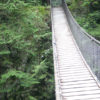A lbeit somewhat cloudy, it was a beautiful autumn day as I walked on the north pedestrian walkway of Erzsébet híd — also known as Elisabeth Bridge in English, which is named after Elisabeth of Bavaria — across the Danube River from Pest to Buda to approach the Gellért Hill and Citadella in Budapest, which offer sweeping panoramic views of the city and its surrounding area in a natural setting.
I enjoy views and I enjoy nature; so it would only seem natural that I would be interested in Gellért Hill, which has been designated as part of a World Heritage Site of the United Nations Educational, Scientific and Cultural Organization.

Gellért Hill is a dolomite rock approximately 140 meters in height which was named after Gerard Sagredo — a bishop who was supposedly rolled down the hill in a barrel and beaten to death on Thursday, September 24, 1046 during the Vata pagan uprising as one of several unverified accounts of his death.

A set of twin staircases provide access to the hill; so I walked up the southern staircase on the left after viewing the falling water shown in the above photograph.

Partially up the hill is a monument of Gerard Sagredo holding a cross in his right hand high above him; with a colonnade behind him partially surrounding him.


It is a shame that some visitors felt the need to deface the colonnade and its base with graffiti.

Near the top of the hill — sitting on its plateau — is the Citadella itself.

The Citadella — meaning small city in Italian — used to be a fortress. Also known as the Citadel, construction of it was ordered by Franz Joseph — who was the king of Hungary — in 1853; and it was erected in 1854 by the Habsburg emperors after overcoming the Hungarian army in the revolution of 1848.


I could not decide which photograph of this road at the Citadella I preferred; so I used both.

Behind the Citadella — or, more accurately, in front of it — is the Liberty Statue triumphantly holding a palm leaf above her. It is also known as Freedom Statue — or as Szabadság Szobor — in Hungarian.

Liberty Statue is one of the few monuments of the Communist era which have not been removed and relocated to a special park for statues called Szoborpark — or Monument Park — after the fall of Communism in 1989 and democracy became the system of government in Hungary.

Liberty Statue was erected in 1947 by Zsigmond Kisfaludi Strobl — its sculptor — after the retreat of members of the German military after the conclusion of World War II and the liberation of Hungary by what was known then as the Soviet Union.

Flanking Liberty Statue on each side are two other statues…

…one of a female figure holding the torch of progress; and…

…one of a young man whose victory over the dragon represents the defeat of fascism.

Best of all, there is no admission fee to enjoy Gellért Hill, which is easy to get to by taxi cab, bus or streetcar — although I simply walked there and up the hill. There appears to be places to park along the west bank of the Danube River; but I did not drive a car while I was in Hungary.

Gellért Hill is also quite easy to find, as Liberty Statue is an integral part of the skyline in Budapest.
There are plenty of other things to do and see at and near Gellért Hill for everyone — from beautifully landscaped gardens to a small playground for children; from the historic Gellért Hotel to the Cave Church. You can easily spend an entire day there; but because my time there was limited, I was not able to partake it them. Perhaps next time I am in Budapest, I will visit what I had missed.
As for the views itself from Gellért Hill — which for me was the main attraction — I took plenty of photographs which I intend to post in a future article.
All photographs ©2014 by Brian Cohen.


